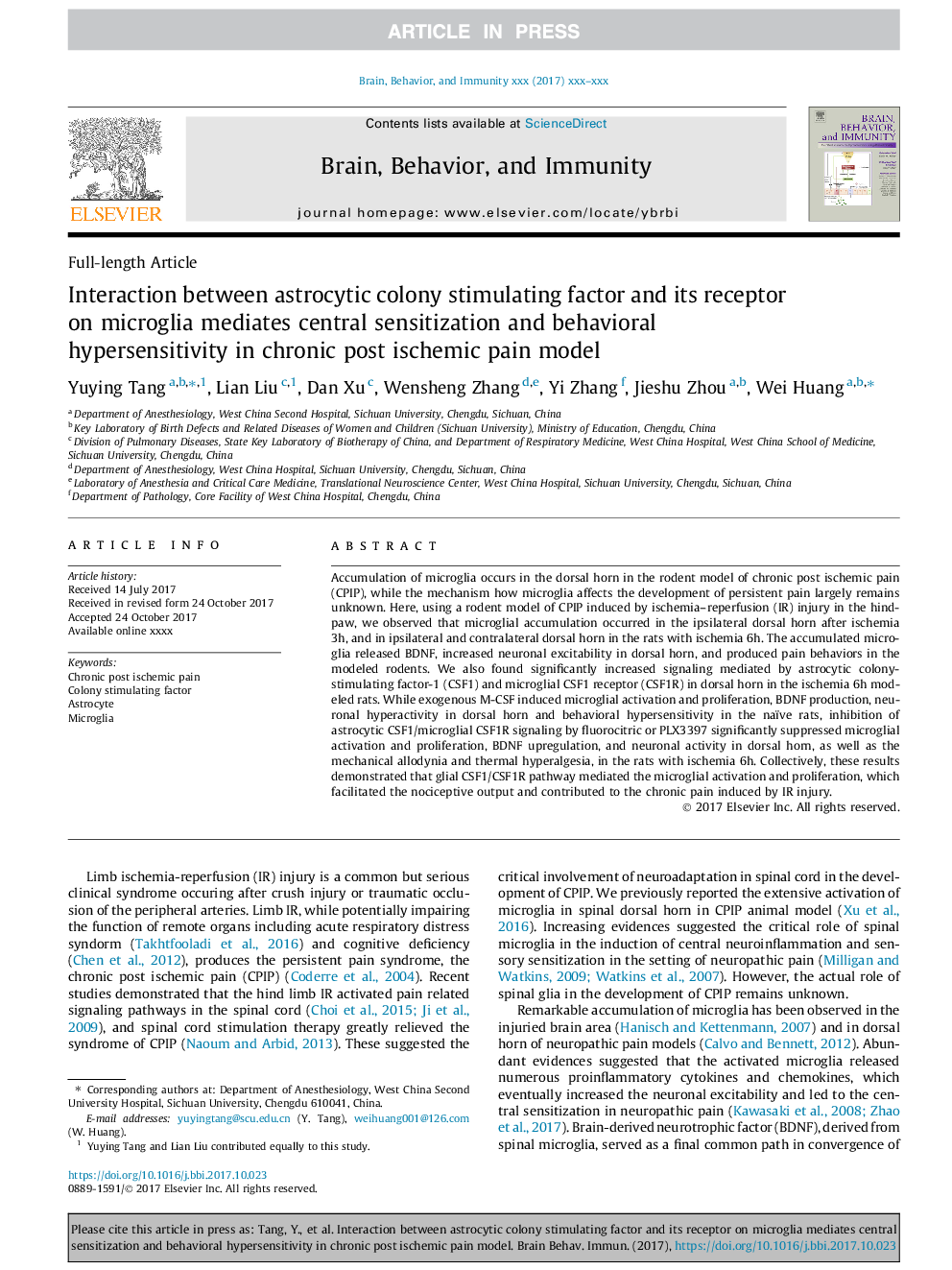| Article ID | Journal | Published Year | Pages | File Type |
|---|---|---|---|---|
| 7279658 | Brain, Behavior, and Immunity | 2018 | 13 Pages |
Abstract
Accumulation of microglia occurs in the dorsal horn in the rodent model of chronic post ischemic pain (CPIP), while the mechanism how microglia affects the development of persistent pain largely remains unknown. Here, using a rodent model of CPIP induced by ischemia-reperfusion (IR) injury in the hindpaw, we observed that microglial accumulation occurred in the ipsilateral dorsal horn after ischemia 3h, and in ipsilateral and contralateral dorsal horn in the rats with ischemia 6h. The accumulated microglia released BDNF, increased neuronal excitability in dorsal horn, and produced pain behaviors in the modeled rodents. We also found significantly increased signaling mediated by astrocytic colony-stimulating factor-1 (CSF1) and microglial CSF1 receptor (CSF1R) in dorsal horn in the ischemia 6h modeled rats. While exogenous M-CSF induced microglial activation and proliferation, BDNF production, neuronal hyperactivity in dorsal horn and behavioral hypersensitivity in the naïve rats, inhibition of astrocytic CSF1/microglial CSF1R signaling by fluorocitric or PLX3397 significantly suppressed microglial activation and proliferation, BDNF upregulation, and neuronal activity in dorsal horn, as well as the mechanical allodynia and thermal hyperalgesia, in the rats with ischemia 6h. Collectively, these results demonstrated that glial CSF1/CSF1R pathway mediated the microglial activation and proliferation, which facilitated the nociceptive output and contributed to the chronic pain induced by IR injury.
Related Topics
Life Sciences
Immunology and Microbiology
Immunology
Authors
Yuying Tang, Lian Liu, Dan Xu, Wensheng Zhang, Yi Zhang, Jieshu Zhou, Wei Huang,
